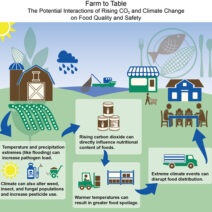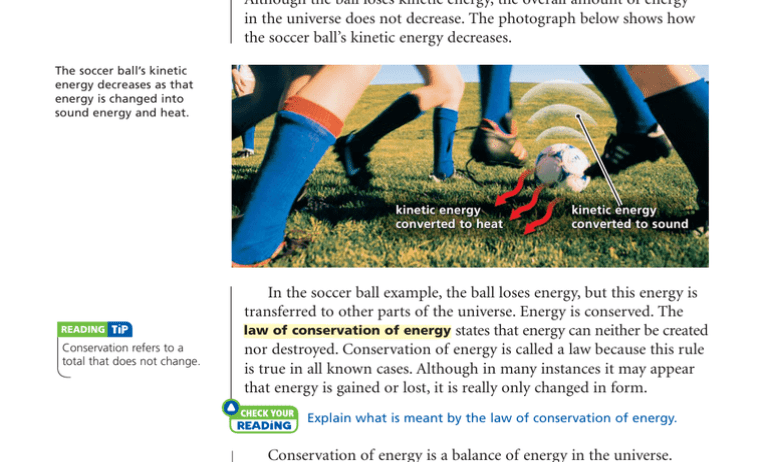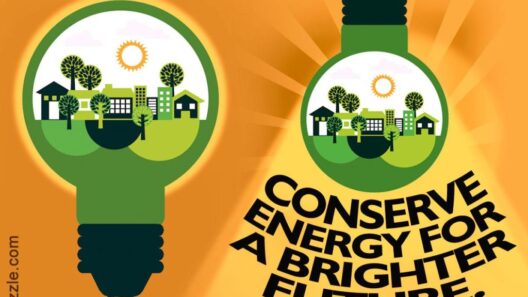In an age where climate change looms as an existential threat, the conversation around energy consumption has never been more critical. The common perception is that energy use is an inevitable facet of modern life; however, it can, in fact, be minimized effectively. Minimizing energy consumption while still ensuring that energy is conserved is a multidimensional issue, rooted in behavioral patterns, technological innovation, and systemic change.
At its core, energy minimization can be intrinsically linked to the fundamental principle of conservation. Energy conservation in the realm of physics indicates that energy cannot be created or destroyed but merely transformed from one form to another. This principle extends seamlessly to the realm of everyday life, where our choices and actions can either heed this natural law of conservation or undermine it through excessive consumption. More than mere consumption reduction, the strategy here is to adopt practices and implement technologies that not only reinforce conservation but also optimize energy use.
A profound approach to minimizing energy lies in understanding the behaviors that underpin our energy consumption patterns. Unconscious habits, such as leaving electrical devices plugged in or utilizing incandescent lighting, contribute substantially to energy inefficiencies. Behavioral economics suggests that nudges, small changes in the way choices are presented, can significantly promote energy-saving measures. For instance, employing smart meters that provide immediate feedback on energy usage can lead to a marked reduction in consumption as individuals become more aware of their habits. Engagement with community programs aimed at promoting energy efficiency can also serve to incentive behavioral shifts, fostering a culture of conservation, making individuals more accountable for their energy use.
Technological innovation plays a pivotal role in minimizing energy consumption. From energy-efficient appliances to advanced building materials, technology can redefine how energy is utilized in various settings. The advent of LED technology, for example, exemplifies a significant leap toward energy conservation. These LEDs consume approximately 80% less energy than traditional incandescent bulbs, translating to substantial savings both economically and environmentally. Additionally, the integration of smart home technologies allows for automated energy management—whereby heating, cooling, and lighting systems can be programmed to function only when necessary, thus optimizing energy use and minimizing waste.
However, the reach of technological solutions is limited if not paired with systematic change. Governments and policymakers must incentivize energy-efficient practices through legislation and subsidies. Policies that integrate renewable energy sources into the mainstream grid can substantially impact overall energy use. For example, investing in solar panels not only serves to harness renewable energy but also encourages homeowners to adopt energy-saving practices. Community solar initiatives can make this advancement more accessible, allowing those who cannot install solar panels to benefit from clean energy sources. In achieving a balance between energy conservation and minimization, it is essential to construct an infrastructure that supports renewable energy adoption, thereby creating an environment conducive for both water and energy conservation.
In addition to employing technological solutions and modifying behavior, the aspect of education cannot be overstated. Promoting awareness about the importance of energy conservation can instill a sense of responsibility in individuals, fostering an informed citizenry committed to minimizing energy use. Academic institutions, corporations, and community organizations can white-paper the vital link between individual actions and cumulative results. Educational programs can elucidate the impact of energy consumption on climate change while providing practical tools for mitigation. Workshops, social media campaigns, and interactive sessions can serve to engage audiences of all ages, thereby extending the reach of energy conservation messages.
Furthermore, a holistic approach to conservation and minimization necessitates consideration of systemic issues. Urban planning, for instance, influences energy use patterns significantly. Zoning policies that promote compact, walkable communities can minimize reliance on automobiles, reducing fossil fuel consumption. Transportation systems that incorporate public transit solutions, biking lanes, and pedestrian pathways can foster a shift away from single-occupancy vehicles. Each transport modality integrates into the energy consumption narrative, reflecting how systemic infrastructure can echo the principles of energy conservation.
Moreover, cross-sector collaboration serves as another crucial component in addressing energy minimization. Partnerships between public sectors, private companies, and non-profit organizations can foster innovative projects that promote efficient energy practices. For example, the collaboration of various stakeholders to develop energy-efficient public buildings can yield ripple effects through energy reduction strategies that are replicable across sectors. These collaborative efforts can introduce advancements in energy efficiency that were previously thought unattainable, creating a robust framework for change.
Finally, the assertion that energy can be minimized while still conserved encapsulates a deeper evolutionary trend. It invites an ideological shift: viewing energy not just as a resource to be used but rather as an integral part of a larger ecological system. It demands a recognition that each individual’s energy choices reverberate through the environment. Harnessing this fascination and duty may propel society towards more sustainable practices, creating a synergy between personal decisions and planetary health—a critical balance needed to confront the challenges of climate change.
In conclusion, the journey towards energy minimization while ensuring conservation is both complex and rewarding. It encompasses behavioral changes, technological advancements, policy shifts, educational initiatives, systemic reforms, and collaborative efforts. As awareness deepens about our collective energy footprint, each individual can contribute to a concerted effort aimed at fostering a sustainable future. Energy is indeed a precious entity; treating it with mindfulness and responsibility will be a cornerstone of resilience in the face of climate change.








